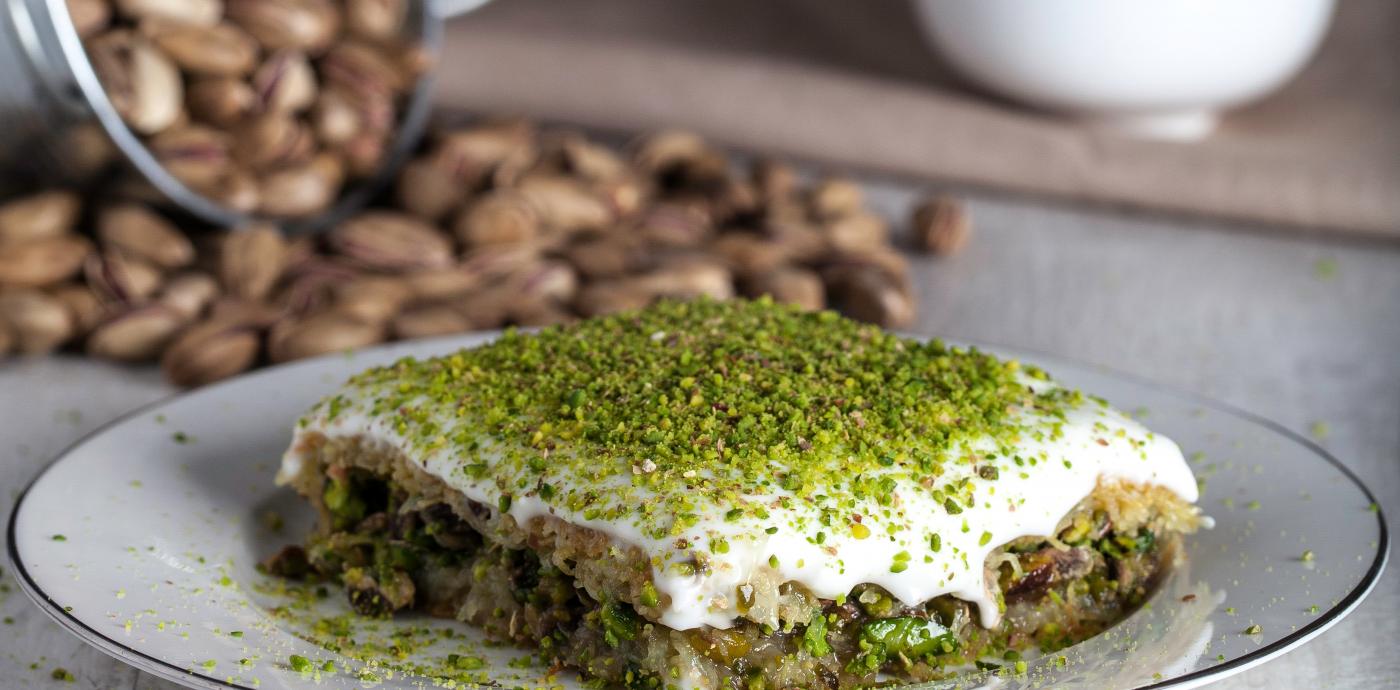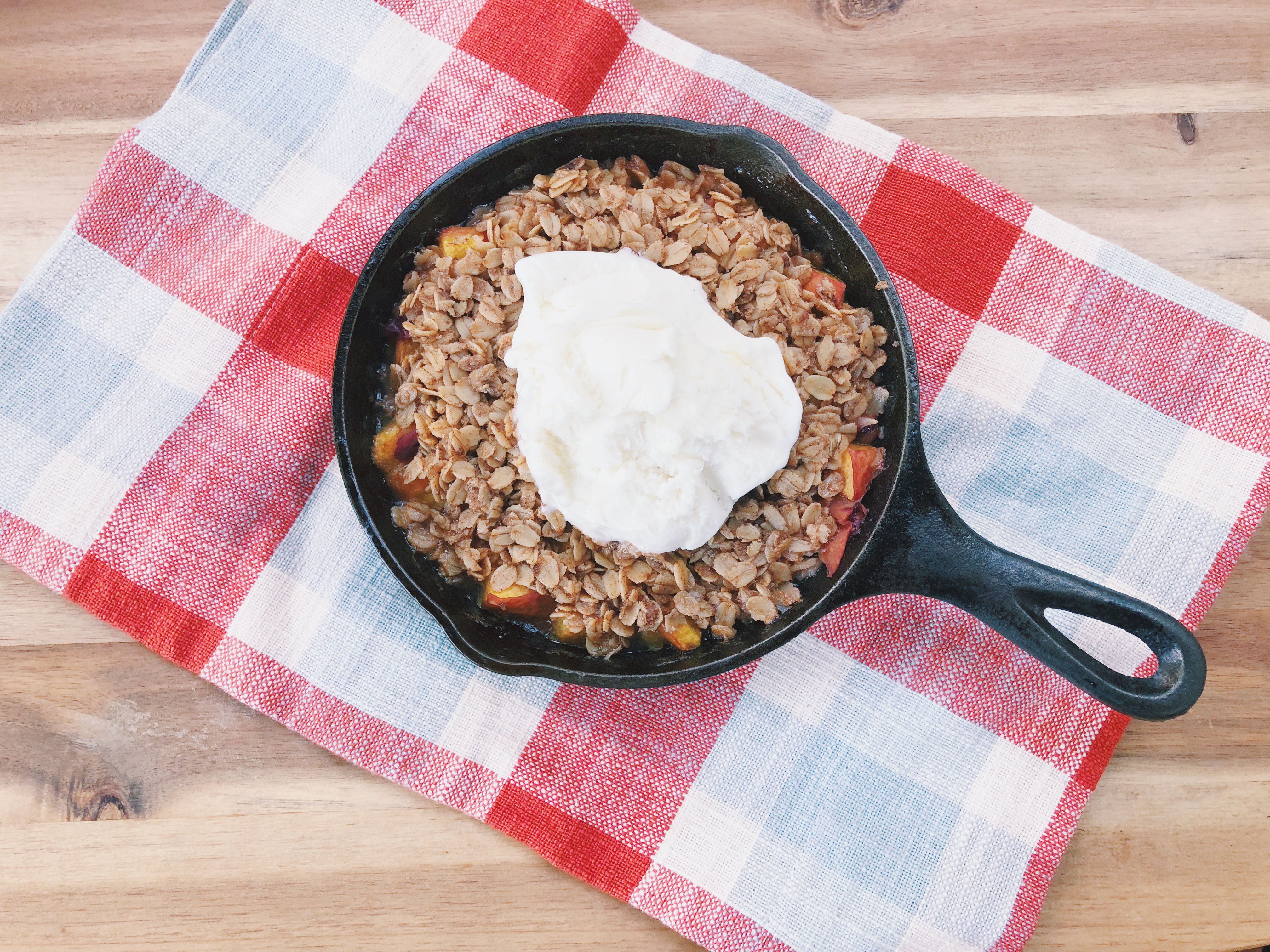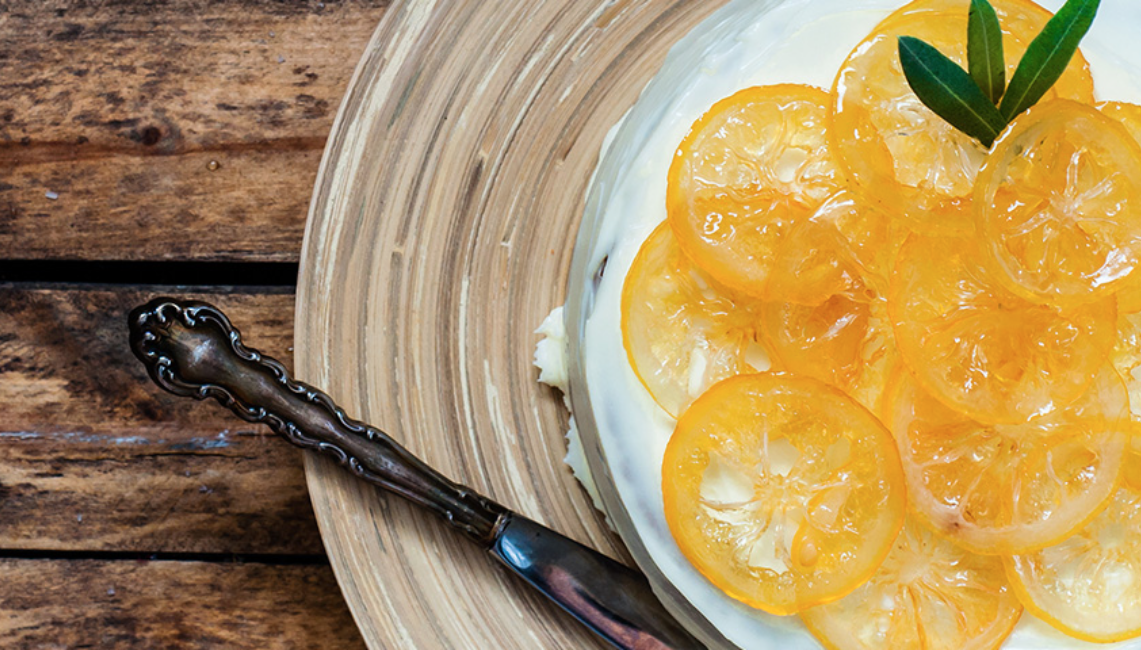Share This
The Mediterranean Diet is largely based on nuts and seeds, whole grains, healthy fats, and an abundance of fruits and vegetables. Having said that, there is no need to deprive yourself of sweets if you embrace a Mediterranean lifestyle. In fact, you can follow this same principles when it comes to desserts.
Fresh fruit can lighten and enliven a variety of desserts. This can be as simple as slicing up your favorite, seasonal fruit and adding it to a bowl of thick, creamy Greek-style yogurt or a scoop of your favorite gelato or ice cream. Did you know that cooking fruit often intensifies and heightens its flavor? Whether in the form of a fruit compote (an easy to prepare fruit sauce cooked briefly on the stovetop), grilled, poached, or roasted with a sprinkling of brown sugar or honey, you can easily incorporate fruit into desserts without getting out the flour and rolling pin. Of course, who doesn’t love a freshly baked, warm out-of-the-oven, apple, berry or cherry pie with that perfect flaky, buttery crust? Another way to integrate fruit into a dessert is by way of a fruit crisp, essentially a baked fruit dessert with a crispy, crunchy topping. A fruit crisp gives you extra bang for your buck as it features fruits and nuts (e.g., pecans, almonds, walnuts, hazelnuts), along with oats (a whole grain).
Adding vegetables to desserts may sound a bit strange. However, you’re probably already familiar with this, if not doing it yourself, in the form of zucchini breads, carrot cakes and sweet potato, pumpkin, or winter squash pies and cakes. Parsnips, which possess an inherent sweetness similar to carrots, and beets, which act as a natural food coloring agent and add moisture and nutrients, are welcome additions to sweet and sweet-savory desserts.
Utilizing whole grains adds more nutrition, not to mention a nutty and tasty flavor, to baked goods. Baking with whole grains may seem intimidating, although it’s actually easier than you might think. A good rule of thumb: You can usually substitute up to 50% of the all-purpose flour in a cake or bread recipe with whole wheat flour, without making other adjustments, and still enjoy a comparable taste and texture. In cookies, scones, pancakes, muffins, and quick breads (like banana bread), it is even easier; feel free to substitute whole grain flour for all-purpose flour one-to-one, without making other changes. Beyond wheat flour, you can experiment in terms of baking by using other whole grains such as sorghum, buckwheat, or oat flour. Keep in mind that with the exception of wheat flour, which naturally contains gluten, all of the aforementioned are gluten-free and will behave differently than wheat flour when baked. It’s best to experiment with just a small amount of these gluten-free flours, or use a more forgiving recipe (like a cookie or quickbread).
A handful of nuts or seeds is a great way to add flavor and texture to desserts. Nuts and seeds are used extensively in Mediterranean desserts. One of the most iconic Mediterranean desserts, baklava, includes sheets of sweet filo pastry filled with layers of chopped nuts—anything from pistachios, to walnuts, to almonds. Toasting nuts and seeds will coax out their inherent sweetness and nuttiness. Certain nuts, such as cashews, have a high fat content, which makes them ideal for soaking and puréeing into a rich plant-based whipped ‘cream’ alternative. Nuts and seeds also make great non-dairy milk alternatives; you can make your own nut- or seed-based milks by simply soaking, blending, and straining any number of nuts or seeds, such as almonds, cashews, hemp, or flax seeds. As well, nuts and seeds can be ground into flours, which make them an ideal gluten-free alternative for your baked treats.
Lastly, you can’t talk about the Mediterranean Diet without mentioning olive oil. Swapping olive oil for butter is a perfect way to Mediterranean-ize your desserts. Olive oil cakes tend to bake up higher, more moist and tender than cakes made with butter. How about an olive oil apple cake, olive oil banana bread, or even olive oil brownies?
Although most desserts today are fairly nutritionally empty, by “Mediterranean-izing” the ingredients, we can add necessary fiber, vitamins, and minerals into a food that usually lacks essential nutrients. Rather than trying to minimize the damage by choosing dessert ingredients that might not be as bad as others (for example, replacing table sugar with agave or coconut sugar), use dessert as an opportunity to deliver the good stuff, like whole grains, fruits, vegetables, nuts, and olive oil.
Want biweekly Med Diet information and recipes in your Inbox? Sign up for our Fresh Fridays newsletter by clicking the Subscribe button at the bottom of this page!
Join the Make Every Day Mediterranean Club Facebook group for additional information and support.




Comments
Add a Comment